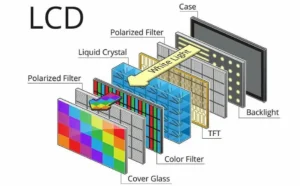Diode

What is diodes explain-
A diode is a two terminal electrical device. Diodes are made from a semiconductor, most often silicon but sometimes germanium. There are various types of diodes, but the ones being discussed here are Zener, Rectifier, Schottky, Transient Voltage Suppressor, Thyristor, Silicon Controlled Rectifier, and TRIAC.
Why are diodes used?
Diodes are used in circuit protection due to their ability to restrict electrical current to flow in only one direction. This trait is useful because some electrical components and devices will be damaged or malfunction if current flows in the wrong direction.
Is diode convert AC to DC?
What Is a Diodes?
Diodes are used to protect circuits by limiting the voltage and to also transform AC into DC. Semiconductors like silicon and germanium are used to make the most of the diodes. Even though they transmit current in a single direction, the way with which they transmit differs. There are different kinds of diodes and each type has its own applications.
Diodes Symbol
A standard diodes symbol is represented as above. In the above diagram, we can see that there are two terminals that are known as anode and cathode. The arrowhead is the anode that represents the direction of the conventional current flow in the forward biased condition. The other end is the cathode.
Diodes Construction
Diodes can be made of either of the two semiconductor materials, silicon and germanium. When the anode voltage is more positive than the cathode voltage, the diodes is said to be forward-biased, and it conducts readily with a relatively low-voltage drop. Likewise, when the cathode voltage is more positive than the anode, the diodes is said to be reverse-biased. The arrow in the diodes symbol represents the direction of conventional current flow when the diodes conducts.
This article lets you understand in detail about various types of diodes.
Diodes:-Types
- Light Emitting Diodes
- Laser diodes
- Avalanche diodes
- Zener diodes
- Schottky diodes
- Photodiodes
- PN junction diodes

Light Emitting Diodes (LED)
When an electric current between the electrodes passes through this diodes, light is produced. In other words, light is generated when a sufficient amount of forwarding current passes through it. In many diodes, this light generated is not visible as there are frequency levels that do not allow visibility. LEDs are available in different colours. There are tricolour LEDs that can emit three colours at a time. Light colour depends on the energy gap of the semiconductor used.
Laser Diodes
It is a different type of diode as it produces coherent light. It is highly used in CD drives, DVDs and laser devices. These are costly when compared to LEDs and are cheaper when compared to other laser generators. Limited life is the only drawback of these diodes.
Avalanche Diodes
This diode belongs tso a reverse bias type and operates using the avalanche effect. When voltage drop is constant and is independent of current, the breakdown of avalanche takes place. They exhibit high levels of sensitivity and hence are used for photo detection.
Zener Diodes
It is the most useful type of diode as it can provide a stable reference voltage. These are operated in reverse bias and break down on the arrival of a certain voltage. If current passing through the resistor is limited, a stable voltage is generated. Zener diodes are widely used in power supplies to provide a reference voltage.
Schottky Diodes
It has a lower forward voltage than other silicon PN junction diodes. The drop will be seen where there is low current and at that stage, voltage ranges between 0.15 and 0.4 volts. These are constructed differently in order to obtain that performance. Schottky diodes are highly used in rectifier applications.
Photodiodes
A photo-diode can identify even a small amount of current flow resulting from the light. These are very helpful in the detection of the light. This is a reverse bias diode and used in solar cells and photometers. They are even used to generate electricity.
P-N Junction Diode
The P-N junction diode is also known as rectifier diodes. These diodes are used for the rectification process and are made up of semiconductor material. The P-N junction diode includes two layers of semiconductors. One layer of the semiconductor material is doped with P-type material and the other layer with N-type material. The combination of these both P and N-type layers form a junction known as the P-N junction. Hence, the name P-N junction diode.
Diode
P-N junction diode allows the current to flow in the forward direction and blocks the flow of current in the reverse direction.
Related Articles:
- How do Diodes Work as a Rectifier?
- Zener Diodes as a Voltage Regulator
- Laser Diodes
- Light Emitting Diode (LED)
- Zener diodes
- Schottky diodes




